| Listing 1 - 7 of 7 |
Sort by
|
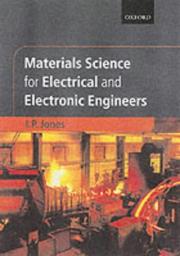
ISBN: 0198562942 Year: 2001 Publisher: Oxford Oxford university press
Abstract | Keywords | Export | Availability | Bookmark
 Loading...
Loading...Choose an application
- Reference Manager
- EndNote
- RefWorks (Direct export to RefWorks)
Concise; covers what's needed at this level without burrying the reader in unnecessary detail Focused on what electrical and electronic engineers need to know Exercises set in the text are answered at the back of the book, showing students how to tackle problems The writing is refreshingly relaxed, clear and confident, making concepts easy to understand and remember This is a book for electrical and electronic engineers, not for materials scientists. Every explanation is rendered in its simplest and clearest form and as many relevant examples are included as possible. At every point, the author makes clear the direct relevance of every topic to the reader's main course of study: electrical and electronic engineering. The central theme is that the type of bonding in a solid not only controls its electrical properties but also, and just as directly, its mechanical properties and how things are made from it. Thus the reason why a copper wire can conduct electricity is exactly the same reason it can be drawn into a wire in the first place. The reason why a piece of porcelain does not conduct electricity is the same as why it cannot be rolled into its final shape as copper could and thus has to be made directly. This common origin of electrical and mechanical properties dictates the structure of the book.
materiaalkennis --- halfgeleiders --- Electronics and optics of solids --- Electronics --- elektronica --- Electrochemistry --- electrochemistry --- elektrische geleiding --- Materials sciences --- elektrochemie --- Electric apparatus and appliances. --- Electrical engineering --- Electronic apparatus and appliances. --- Materials science. --- Materials. --- Electric apparatus and appliances --- Electronic apparatus and appliances --- Materials science --- Material science --- Physical sciences --- Electronic materials --- Electronic devices --- Physical instruments --- Scientific apparatus and instruments --- Electronic instruments --- Apparatus, Electric --- Appliances, Electric --- Electric appliances --- Electricity --- Instruments, Electric --- Materials --- Apparatus and appliances
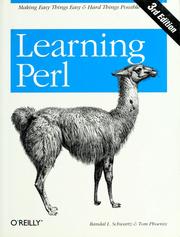
ISBN: 0596001320 Year: 2001 Publisher: Beijing O'Reilly
Abstract | Keywords | Export | Availability | Bookmark
 Loading...
Loading...Choose an application
- Reference Manager
- EndNote
- RefWorks (Direct export to RefWorks)
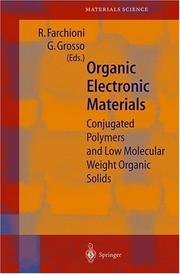
ISBN: 3540667210 3642630855 3642564259 9783540667216 Year: 2001 Volume: 41 Publisher: Berlin Springer
Abstract | Keywords | Export | Availability | Bookmark
 Loading...
Loading...Choose an application
- Reference Manager
- EndNote
- RefWorks (Direct export to RefWorks)
Studies on the electronic properties of conjugated polymers and low molecular weight organic solids have been of increasing interest in recent years. This book is organized into two parts dedicated to these two classes of materials. For each part a general introductory review provides background knowledge of the language and of the main points required for understanding the book's contents. The reviews that follow provide a more complete understanding of the underlying physics of the materials through discussion of the interconnected topics. Theoretical concepts, models and methods are overviewed; this is used to support the explanation of the physical and chemical properties of these materials. The presentation of selected aspects of experimental research greatly contributes to the basic understanding of organic electronic materials.
Materials sciences --- Electronics and optics of solids --- Conducting polymers. --- Organic conductors. --- 544.225 --- Electronic structure of crystals --- Conducting polymers --- Organic conductors --- Conductors, Organic --- Molecular metals --- Organic metals --- Polymer metals --- Electroactive polymers --- Electroconductive polymers --- One-dimensional conductors --- Organometallic compounds --- Polymers --- Conjugated polymers --- Optical materials. --- Electronic materials. --- Materials science. --- Polymers . --- Electronics. --- Microelectronics. --- Optical and Electronic Materials. --- Characterization and Evaluation of Materials. --- Polymer Sciences. --- Electronics and Microelectronics, Instrumentation. --- Microminiature electronic equipment --- Microminiaturization (Electronics) --- Electronics --- Microtechnology --- Semiconductors --- Miniature electronic equipment --- Electrical engineering --- Physical sciences --- Polymere --- Polymeride --- Polymers and polymerization --- Macromolecules --- Material science --- Electronic materials --- Optics --- Materials
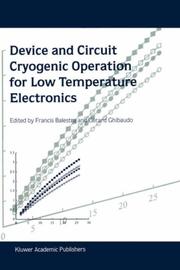
ISBN: 0792373774 1441948988 1475733186 Year: 2001 Publisher: Boston Kluwer
Abstract | Keywords | Export | Availability | Bookmark
 Loading...
Loading...Choose an application
- Reference Manager
- EndNote
- RefWorks (Direct export to RefWorks)
Device and Circuit Cryogenic Operation for Low Temperature Electronics is a first in reviewing the performance and physical mechanisms of advanced devices and circuits at cryogenic temperatures that can be used for many applications. The first two chapters cover bulk silicon and SOI MOSFETs. The electronic transport in the inversion layer, the influence of impurity freeze-out, the special electrical properties of SOI structures, the device reliability and the interest of a low temperature operation for the ultimate integration of silicon down to nanometer dimensions are described. The next two chapters deal with Silicon-Germanium and III-V Heterojunction Bipolar Transistors, as well as III-V High Electron Mobility Transistors (HEMT). The basic physics of the SiGe HBT and its unique cryogenic capabilities, the optimization of such bipolar devices, and the performance of SiGe HBT BiCMOS technology at liquid nitrogen temperature are examined. The physical effects in III-V semiconductors at low temperature, the HEMT and HBT static, high frequency and noise properties, and the comparison of various cooled III-V devices are also addressed. The next chapter treats quantum effect devices made of silicon materials. The major quantum effects at low temperature, quantum wires, quantum dots as well as single electron devices and applications are investigated. The last chapter overviews the performances of cryogenic circuits and their applications. The low temperature properties and performance of inverters, multipliers, adders, operational amplifiers, memories, microprocessors, imaging devices, circuits and systems, sensors and read-out circuits are analyzed. Device and Circuit Cryogenic Operation for Low Temperature Electronics is useful for researchers, engineers, Ph.D. and M.S. students working in the field of advanced electron devices and circuits, new semiconductor materials, and low temperature electronics and physics.
Cryoelectronics --- Electronic apparatus and appliances --- -Electronic devices --- Electronics --- Physical instruments --- Scientific apparatus and instruments --- Electronic instruments --- Cryogenic electronics --- Cryotronics --- Low temperature engineering --- Superconductivity --- Thermal properties --- Apparatus and appliances --- -Thermal properties --- Electronics. --- Microelectronics. --- Electronic circuits. --- Electrical engineering. --- Materials science. --- Optical materials. --- Electronic materials. --- Electronics and Microelectronics, Instrumentation. --- Circuits and Systems. --- Electrical Engineering. --- Characterization and Evaluation of Materials. --- Optical and Electronic Materials. --- Electronic materials --- Optics --- Materials --- Material science --- Physical sciences --- Electric engineering --- Engineering --- Electron-tube circuits --- Electric circuits --- Electron tubes --- Microminiature electronic equipment --- Microminiaturization (Electronics) --- Microtechnology --- Semiconductors --- Miniature electronic equipment --- Electrical engineering
Periodical
ISSN: 15306984 15306992 Year: 2001 Publisher: Washington: American chemical society,
Abstract | Keywords | Export | Availability | Bookmark
 Loading...
Loading...Choose an application
- Reference Manager
- EndNote
- RefWorks (Direct export to RefWorks)
Nano Letters rapidly communicates significant research results related to the theory and practice of nanoscience, nanotechnology, and nanoscale research across a wide range of disciplines that include physical and materials chemistry, biotechnology, and applied physics.
Biotechnology --- Miniaturization --- Molecular Biology --- Nanotechnology --- Nanotechnologie --- Periodicals. --- Périodiques --- Biotechnology. --- Molecular Biology. --- Miniaturization. --- Nanotechnology. --- JEX7 --- Periodicals --- E-journals --- Engineering --- Material Science and Metallurgy --- Mechanical Engineering --- Nanomaterials --- Molecular technology --- Nanoscale technology --- Miniaturisation --- Miniaturisations --- Miniaturizations --- Biochemical Genetics --- Biology, Molecular --- Genetics, Biochemical --- Genetics, Molecular --- Molecular Genetics --- Biochemical Genetic --- Genetic, Biochemical --- Genetic, Molecular --- Molecular Genetic --- Biotechnologies --- High technology --- Microchemistry --- Genetic Phenomena --- Microelectronics. --- Biotechnologie. --- Microélectronique. --- bioengineering. --- microelectronics. --- Microminiature electronic equipment --- Microminiaturization (Electronics) --- Electronics --- Microtechnology --- Semiconductors --- Miniature electronic equipment --- Nanotechnology - Periodicals
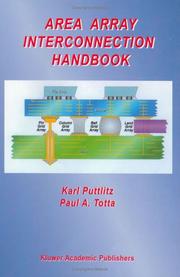
ISBN: 0792379195 146135529X 1461513898 Year: 2001 Publisher: Boston Kluwer
Abstract | Keywords | Export | Availability | Bookmark
 Loading...
Loading...Choose an application
- Reference Manager
- EndNote
- RefWorks (Direct export to RefWorks)
Microelectronic packaging has been recognized as an important "enabler" for the solid state revolution in electronics which we have witnessed in the last third of the twentieth century. Packaging has provided the necessary external wiring and interconnection capability for transistors and integrated circuits while they have gone through their own spectacular revolution from discrete device to gigascale integration. At IBM we are proud to have created the initial, simple concept of flip chip with solder bump connections at a time when a better way was needed to boost the reliability and improve the manufacturability of semiconductors. The basic design which was chosen for SLT (Solid Logic Technology) in the 1960s was easily extended to integrated circuits in the '70s and VLSI in the '80s and '90s. Three I/O bumps have grown to 3000 with even more anticipated for the future. The package families have evolved from thick-film (SLT) to thin-film (metallized ceramic) to co-fired multi-layer ceramic. A later family or ceramics with matching expansivity to sili con and copper internal wiring was developed as a predecessor of the chip interconnection revolution in copper, multilevel, submicron wiring. Powerful server packages have been de veloped in which the combined chip and package copper wiring exceeds a kilometer. All of this was achieved with the constant objective of minimizing circuit delays through short, efficient interconnects.
Hybrid integrated circuits. --- Microelectronics. --- Hybrid integrated circuits --- Microelectronics --- Microminiature electronic equipment --- Microminiaturization (Electronics) --- Electronics --- Microtechnology --- Semiconductors --- Miniature electronic equipment --- Integrated circuits --- Electronic circuits. --- Manufactures. --- Climate change. --- Electrical engineering. --- Circuits and Systems. --- Manufacturing, Machines, Tools, Processes. --- Climate Change. --- Electrical Engineering. --- Electric engineering --- Engineering --- Changes, Climatic --- Changes in climate --- Climate change --- Climate change science --- Climate changes --- Climate variations --- Climatic change --- Climatic changes --- Climatic fluctuations --- Climatic variations --- Global climate changes --- Global climatic changes --- Climatology --- Climate change mitigation --- Teleconnections (Climatology) --- Manufactured goods --- Manufactured products --- Products --- Products, Manufactured --- Commercial products --- Manufacturing industries --- Electron-tube circuits --- Electric circuits --- Electron tubes --- Environmental aspects
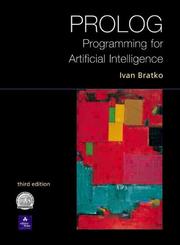
ISBN: 0201403757 9780201403756 Year: 2001 Publisher: Wokingham Addison-Wesley
Abstract | Keywords | Export | Availability | Bookmark
 Loading...
Loading...Choose an application
- Reference Manager
- EndNote
- RefWorks (Direct export to RefWorks)
Artificial intelligence. Robotics. Simulation. Graphics --- Artificial intelligence --- Prolog (Computer program language) --- Intelligence artificielle --- PROLOG (Langage de programmation) --- Data processing --- Informatique --- -Prolog (Computer program language) --- 681.3*D32 --- 681.3*I25 --- AI (Artificial intelligence) --- Artificial thinking --- Electronic brains --- Intellectronics --- Intelligence, Artificial --- Intelligent machines --- Machine intelligence --- Thinking, Artificial --- Bionics --- Cognitive science --- Digital computer simulation --- Electronic data processing --- Logic machines --- Machine theory --- Self-organizing systems --- Simulation methods --- Fifth generation computers --- Neural computers --- language classifications: applicative languages; data-flow languages; design languages; extensible languages; macro and assembly languages; nonprocedural languages; specialized application and very high-level languages (Programminglanguages) --- Programming languages and software: expert system tools and techniques (Artificial intelligence)--See also {681.3*D32} --- 681.3*I25 Programming languages and software: expert system tools and techniques (Artificial intelligence)--See also {681.3*D32} --- 681.3*D32 language classifications: applicative languages; data-flow languages; design languages; extensible languages; macro and assembly languages; nonprocedural languages; specialized application and very high-level languages (Programminglanguages) --- Artificial intelligence. --- Prolog (computer language)
| Listing 1 - 7 of 7 |
Sort by
|

 Search
Search Feedback
Feedback About
About Help
Help News
News